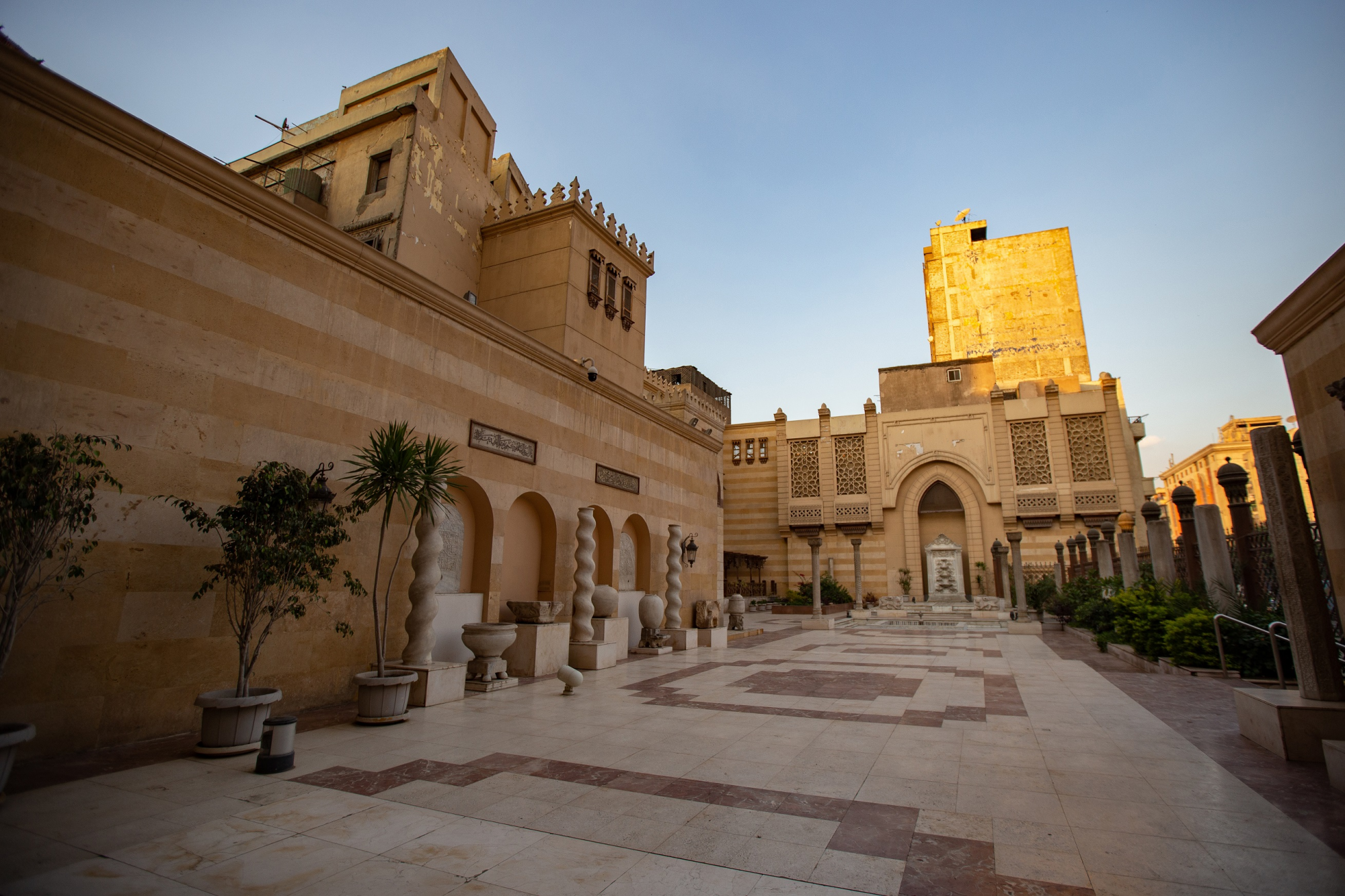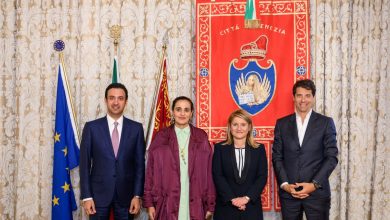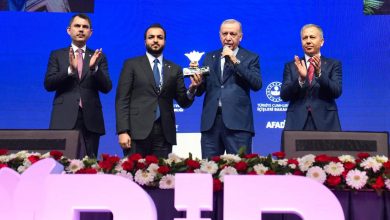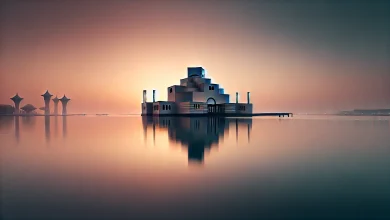Museum of Islamic Arts in Cairo: Rare Collections That Reflect a Bright Islamic Civilization
متحف الفن الإسلامي بالقاهرة .. مقتنيات نادرة تعكس صورة الحضارة الإسلامية
QNA
Cairo: The Museum of Islamic Art in Cairo reflects a bright image of the Islamic civilization, with valuable collections of more than 100 thousand archaeological artefacts of all periods of the Islamic history and from many destinations, most notably India, China, Iran, the Arabian Peninsula, the Levant, Egypt, and North Africa and Andalusia.
Located at the heart of the Egyptian capital city of Cairo, the museum derives its historic prestige not only from the fact that it is one of the largest museums of Islamic arts worldwide or the huge collections of pieces it displays, but also the diversity and comprehensiveness of these artefacts. This gave the ancient edifice a historical role of preserving the Islamic heritage, which extended to include interest in the fields of education, research, scientific cooperation and dialogue of civilizations.
As Cairo was announced as the Capital of Culture in the Islamic World for 2022 by the Islamic World Educational, Scientific and Cultural Organization (ICESCO), Qatar News Agency (QNA) visited the Museum of Islamic Art in Cairo for a close monitoring on its huge collections and rare antiques that made it a luminous landmark in the history of this ancient city and over the various prosperous eras of the Islamic world.
The museum halls feature rare collections of glass, Ottoman ceramics, Iranian and Turkish carpets, as well as a set of astronomy and engineering tools that were used in the Middle Ages, in addition to textiles and seals, as well as a distinguished group of surgical and cupping therapy tools that were used in Islamic times, which reflects the extent of prosperity witnessed in medicine, engineering and chemistry, along with rare copies of the Noble Quran, the “Key of the Kaaba” and other rare treasures.
The establishment of the museum went through several significant historical phases. The idea that first emerged in 1869 at the era of Khedive Ismail Pasha turned into a reality in 1880, when Khedive Tawfiq ordered then head of technical department at the Ministry of Endowments (Awqaf) Julius Franz, an Austrian scholar of Hungarian descent, to set it up. Franz collected in 1882 111 Islamic archeological pieces in the eastern iwan (arcade) of the Mosque of Al Hakim (a historic mosque named after Al Hakim bi Amr Allah 985-1021). The move was followed by the establishment of the “Arab Museum” in the courtyard of the mosque, and in 1903, the museum, then called “Dar al-Athar al-Arabiya” was set up in Bab Al Khalq Square, one of historic Cairo’s famous squares.
Speaking exclusively to QNA, Director-General of the Museum of Islamic Arts Dr. Mamdouh Othman said that the many phases of development the museum went through were documented in the museum archive, noting that all the collections at the Arab Museum were transferred to the newly established museum in 1903, which later began to receive donations from prominent people.
Othman pointed out that the continuous donations of Islamic era-related artefacts and the many archeological pieces excavated from the Fustat area led to a significant surge in the number of objects in the museum.
He added that the museum halls were now displaying about 4,500 artefacts, but the museum houses more than 100,000 objects, with the remainder in storage. All these pieces are used to supply all Egypt’s museums that have halls of Islamic art, a move that helped preserve these important monuments on the one hand, and made this edifice the mother museum of Islamic civilization, which feeds the rest of the museums on the other hand, the museum director elaborated.
Othman highlighted the role of the museum which turned into a university for studying archeology and a destination for scholars in the fields of science, arts and scientific research in general, with the museum library containing just shy of 13 thousand books representing rare and valuable collections of specialized references in history, antiquities, Islamic arts and architecture.
Regarding the important milestones witnessed by the museum over the past and current centuries, head of the Archival Department and Director of the Archives at the Museum of Islamic Art in Cairo Dr. Heba Abdullah Mahmoud reviewed in statements to the Qatar news agency (QNA) the stages of its development since it was called the Dar Al-Athar or the Arab museum until 1952, when the processes of gifting and purchasing of artifacts donated to the museum began, including Islamic pieces for non-Arabic speakers, from countries such as Turkey, Iran, China, and India, pointing out that this was the idea of changing the name of the museum from Dar Al-Athar to the Museum of Islamic Art.
The museum was developed for the first time in 1983 by annexing the land where a garden is adjacent to the museum building, and the style and mechanisms of the exhibition have been renovated, so the development process continued until its reopening in 2010, where it witnessed the construction of a library containing hundreds of mothers of books, a restoration laboratory, and offices for employees, where the museum was divided into two wings, the first adopts a historical arrangement from the Umayyad era to the era of the Muhammad Ali family, and the second adopts an arrangement of topics of castings, everyday life medicine, weapons, carpets, and weaving, to be renovated again after seven years to return to its original form with all its belongings.
She pointed out that the museum houses a large number of wonderful art collections that have made it one of the largest museums in the world, pointing out in this regard that the weapons hall houses the weapons of Sultans and caliphs who played important roles in preserving Islamic Civilization, including the Ottoman Sultan Mehmed II “The Conqueror”, where the museum contains his sword, which he imitated when he conquered Constantinople and has writings calling for justice and compassion for the poor.
She confirmed that one of the most important things that attracts the visitor to the museum is the “Key of the Kaaba”, which is an honorary key, as Egypt used to send the clothing and Kiswa of the Kaaba, after which the Kiswah and the key return with it to the Sultan again to bless him, and besides that there is the door of Al-Sayeda Zainab Mosque, which was created during the reign of Muhammad Ali Pasha, where it is the largest silver-plated door, noting that two of the most important pieces are also two pieces of menorah for Sultan Qaitbay, as they were located during a fire in the Prophet’s chamber, and Qaitbay rehabilitated the Prophet’s chamber and many pieces were allocated for it, including the two pieces of the menorah, and they were returned to Egypt again and deposited in the Museum of Islamic Art, and the museum is not without ancient arts, the most important of which is the arabesque art.
The head of the Archival Department at the Museum of Islamic Art added that the museum cares for science, medicine and Astronomy. A Hall is dedicated to this department that includes traditional medicine, Anatomy instruments, scales, pints, grinding tools and folk medicine. The museum also hosts a collection of astronomy, engineering, chemistry, surgical and cupping tools that reflect the progress of the Islamic world in its prosperous times. The museum’s halls also include a collection of the rarest types of carpets in the world, which are characterized by the knot style, which is a Turkish and Iranian industry that reflects the great progress of Islamic civilization and arts.
قنا
القاهرة: يعكس متحف الفن الإسلامي بالقاهرة، من خلال مقتنياته الثمينة صورة ناصعة للحضارة الإسلامية العظيمة على امتداد عصورها، حيث يضم أكثر من 100 ألف تحفة أثرية تشمل مختلف العصور بالعالم الإسلامي وكثير من البلدان، كالهند، والصين، وإيران، والجزيرة العربية، والشام، ومصر، وشمال إفريقيا، والأندلس.
ولا تتوقف مكانة متحف الفن الإسلامي الذي يتوسط قلب العاصمة المصرية القاهرة، على كونه من أكبر متاحف الفنون الإسلامية في العالم، أو احتضانه لهذا الكم الهائل من الآثار، بل تكمن أيضا أهميته التاريخية في تنوع هذه الآثار وشمولها، ما يعطي زخما لهذا الصرح العريق ودوره التاريخي المهم في الحفاظ على التراث الإسلامي، الذي امتد ليشمل الاهتمام بمجالات التعليم، والبحث والتعاون العلمي، والحوار والتقارب بين الحضارات.
وبالتزامن مع احتفالات القاهرة عاصمة للثقافة في العالم الإسلامي لعام 2022 من جانب منظمة العالم الإسلامي للتربية والعلوم والثقافة (إيسيسكو)، زارت وكالة الأنباء القطرية /قنا/ متحف الفن الإسلامي بالقاهرة للتعرف عن قرب على هذا الزخم الهائل من المقتنيات والتحف النادرة التي جعلت منه علامة مضيئة في تاريخ هذه المدينة العريقة والعالم الإسلامي عبر مختلف عصوره المزدهرة، لما يحويه من تحف أثرية، وصل عددها إلى ما يقرب من 100 ألف تحفة أثرية، ما يجعله من أكبر متاحف الفنون الإسلامية في العالم.
وتضم قاعات العرض بالمتحف مجموعات نادرة من الزجاج والخزف العثماني والسجاد الإيراني والتركي، بجانب مجموعة من أدوات الفلك والهندسة التي كانت تستخدم في العصور الوسطى، إضافة إلى المنسوجات والأختام، فضلا عن مجموعة متميزة من آلات الجراحة والحجامة التي كانت تستخدم في العصور الإسلامية، ما يعكس حجم الازدهار الذي كانت تشهده في مجالات الطب والهندسة والكيمياء، إلى جانب نسخ نادرة من المصحف الشريف و”مفتاح الكعبة” وغيرها من كنوز نادرة.
وشهد هذا المتحف محطات تاريخية مهمة منذ أن تحولت فكرة إنشاء متحف للفنون والآثار الإسلامية في عصر الخديوي “إسماعيل” سنة 1869 إلى واقع ملموس في عصر الخديوي “توفيق” سنة 1880، حيث تم تنفيذ هذه الفكرة على أيدي فرانتز باشا مدير القسم الفني في وزارة الأوقاف في مصر آنذاك، والذي قام بجمع التحف الأثرية التي ترجع إلى العصر الإسلامي في الإيوان الشرقي لجامع “الحاكم بأمر الله” بالقاهرة، إلى أن وصل عددها إلى 111 تحفة في عام 1882، ثم أعقب ذلك بناء مبنى صغير في صحن الجامع أطلق عليه اسم “المتحف العربي”، قبل أن يتم افتتاح متحف الفن الإسلامي في المبنى الحالي بميدان باب الخلق، أحد أشهر ميادين القاهرة التاريخية، في عهد الخديوي “عباس حلمي الثاني” في 28 ديسمبر سنة 1903.
وفي هذا السياق، يقول الدكتور ممدوح عثمان مدير المتحف الإسلامي، في تصريحات خاصة لوكالة الأنباء القطرية /قنا/، إن المتحف مر بمراحل تطور عديدة وإن الأمر لم يكن اعتياديا وإنما جرى تسجيل هذه المراحل وتوثيقها في أرشيف المتحف، مشيرا إلى أنه مع افتتاح مبنى المتحف عام 1903، تم نقل كل المحتويات والمقتنيات من المتحف العربي أو الانتكخانة في مسجد “الحاكم بأمر الله” إلى المتحف الذي تم إنشاؤه حديثا، والذي بدأ لاحقا في استقبال عدد من الإهداءات من قبل أشخاص بارزين.
ولفت إلى أن شراء القطع الأثرية التي تنتمي إلى العصر الإسلامي وإرسالها للمتحف أو إهداءه إياها لم يتوقفا وظلا هكذا حتى زادت بشكل كبير أعداد القطع في المتحف، كما تم استخراج العديد من القطع التراثية نتيجة حفائر في تلال الفسطاط، الأمر الذي أضفى إثراء كبيرا في محتوياته، مشيرا في هذا الصدد إلى أن عدد القطع الموجودة في العرض المتحفي داخل متحف الفن الإسلامي تصل إلى أكثر من 4 آلاف قطعة، إلى جانب وجود ما يقارب 96 ألف قطعة أثرية في المخازن تستخدم في إثراء جميع متاحف مصر التي يوجد بها قاعات للفنون الإسلامية، بما حافظ على هذه الآثار المهمة من جهة، وجعل من هذا الصرح المتحف الأم للحضارة الإسلامية الذي يغذي بقية المتاحف من جهة ثانية.
وأشار عثمان إلى دور متحف الفن الإسلامي بالقاهرة الذي تحول إلى جامعة لدراسة فنون الآثار وقبلة للدارسين في مجالات العلوم والفنون والبحث العلمي بصفة عامة، حيث تضم مكتبة المتحف مجموعة نادرة وقيمة من المصادر والمراجع المتخصصة في مجال التاريخ والآثار والفنون والعمارة الإسلامية تصل إلى حوالي ثلاثة عشر ألف كتاب.
وحول المحطات المهمة التي شهدها المتحف على مدار القرنين السابق والحالي، استعرضت الدكتورة هبة عبداللاه محمود رئيس قسم الأرشفة ومدير الأحراز بمتحف الفن الإسلامي بالقاهرة، في تصريحات لوكالة الأنباء القطرية /قنا/، مراحل تطويره منذ أن كان اسمه دار الآثار العربية أو المتحف العربي حتى عام 1952 الذي بدأت تتوالى فيه عمليات الإهداء والشراء للقطع الأثرية المهداة إلى المتحف، حتى كان من بينها قطع إسلامية لغير الناطقين بالعربية، من دول مثل تركيا، وإيران، والصين، والهند، لافتة إلى أن ذلك كان باعثا لفكرة تغيير اسم المتحف من دار الآثار العربية إلى متحف الفن الإسلامي، ليتم تطويره لأول مرة في عام 1983 بضم الأرض التي توجد بها الحديقة المجاورة له إلى مبنى المتحف، كما جرى تجديد أسلوب العرض وآلياته”، لتتواصل عملية التطوير حتى إعادة افتتاحه عام 2010، حيث شهد بناء مكتبة تحوي مئات من أمهات الكتب، ومعمل الترميم، ومكاتب للعاملين، حيث تم تقسيم المتحف إلى جناحين، الأول يعتمد ترتيبا تاريخيا من العصر الأموي وحتى عصر أسرة محمد علي، والثاني يعتمد ترتيبا بالموضوعات مثل المسبوكات، السلاح والحياة اليومية، والطب والحياة اليومية، والسجاد، والنسيج ، وليتم تجديده مرة أخرى بعد سبع سنوات ليعاد على شكله الأول بكامل مقتنياته.
وأشارت إلى أن المتحف يضم عددا كبيرا من المقتنيات الفنية الرائعة التي جعلته أحد أكبر المتاحف على مستوى العالم، لافتة في هذا الصدد إلى أن قاعة الأسلحة تضم أسلحة السلاطين والخلفاء الذين أدوا أدوارا مهمة في الحفاظ على الحضارة الإسلامية، ومنهم السلطان العثماني محمد الثاني “الفاتح”، حيث يحتوي المتحف على سيفه الذي تقلده عند فتحه القسطنطينية وعليه كتابات تدعو إلى العدل والعطف على الفقراء والمساكين.
وقالت إن من أهم ما يجذب الزائر للمتحف هو “مفتاح الكعبة” وهو مفتاح تشريفي، حيث كانت مصر ترسل المحمل وكسوة الكعبة، وبعد ذلك يعود المحمل ومعه المفتاح إلى السلطان مرة أخرى للتبرك به، وإلى جانب ذلك يوجد باب مسجد السيدة زينب الذي تم إنشاؤه في عهد محمد علي باشا، حيث يعد أكبر باب مصفح بالفضة، مشيرة إلى أن من أهم القطع أيضا قطعتا شمعدان للسلطان قايتباي، حيث كانتا موجودتين أثناء حريق شب في الحجرة النبوية، وأعاد قايتباي تأهيل الحجرة النبوية وترميمها وأوقف لها العديد من القطع من بينها قطعتا الشمعدان، وتمت إعادتهما إلى مصر مرة أخرى وإيداعهما في متحف الفن الإسلامي، كما لا يخلو المتحف من الفنون العريقة وأهمها فن الأرابيسك.
وأضافت رئيس قسم الأرشفة بمتحف “الفن الإسلامي” أن المتحف يهتم بمجال العلوم والطب والفلك، وتخصص قاعة لهذا القسم تضم الطب التقليدي، وأدوات التشريح والموازين والمكاييل وأدوات الطحن والطب الشعبي، كما يحتضن المتحف مجموعة من أدوات الفلك والهندسة والكيمياء والأدوات الجراحية والحجامة التي تعكس تقدم العالم الإسلامي في عصوره المزدهرة، كما تضم قاعات المتحف مجموعة من أندر أنواع السجاد الموجود في العالم، والتي تتميز بأسلوب العقدة، وهو صناعة تركية وإيرانية تعكس التقدم الكبير للحضارة والفنون الإسلامية.




